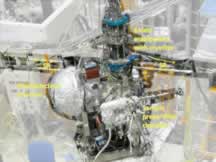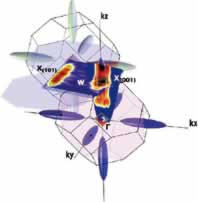What's new
The present status of the UVSOR-III Synchrotron is marked by progress in lowering of the electron beam emittance and installation of beamline undulators. At present, all at the UVSOR Synchrotron Facility stand united in their dedication to further heightening and stabilization of the light-source brilliance and to molecular science application using 6 advanced undulator beamlines with increasing overseas users. A scanning transmission X-ray microscope (STXM) installed on BL4U is quite successfully in operation and an angle-, spin-, and space-resolved photoelectron spectroscopy on BL5U is now under construction.UVSOR Synchrotron Facility
Light is called with various names such as infrared, visible, ultraviolet, vacuum-ultraviolet and X-ray, depending on its wavelength. A synchrotron light source is capable of producing light in the ultra-wide wavelength range from infrared to X-rays. Synchrotron light radiated by high energy electrons traveling in a strong magnetic field is intense and highly collimated. It is widely used in various research fields including molecular science. In IMS, a synchrotron light source has been operational since 1983. The Synchrotron-related technology has been developed, hence lots of unique Synchrotron facilities were constructed in the world. The UVSOR Synchrotron Facility developed successfully the continuous upgrade of the light source and beamlines from UVSOR-I to UVSOR-II (~2002) and from UVSOR-II to UVSOR-III (~2012). After several upgrades, it is still brightest in the world among low energy synchrotron light sources. The UVSOR-III Synchrotron has an electron storage ring of 53 m-circumference and experimental stations on 6 undulator and 8 dipole beamlines. This facility is used by many researchers not only from our country but also from foreign countries.

Three-dimensional angle-resolved photoemission (3D-ARPES)apparatus. |

Fermi surface of a solid (CeSb) derived by 3D-ARPES apparatus. |

